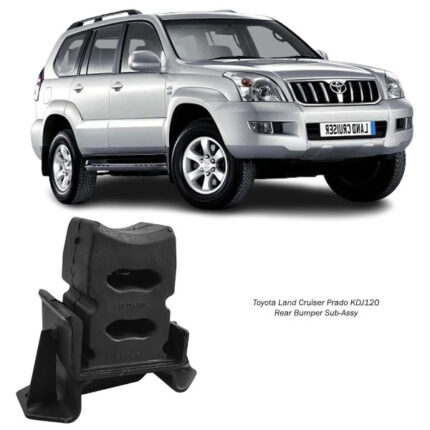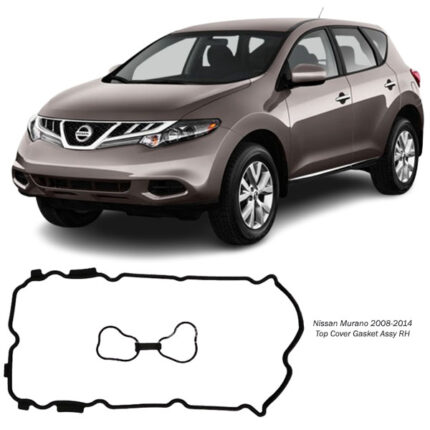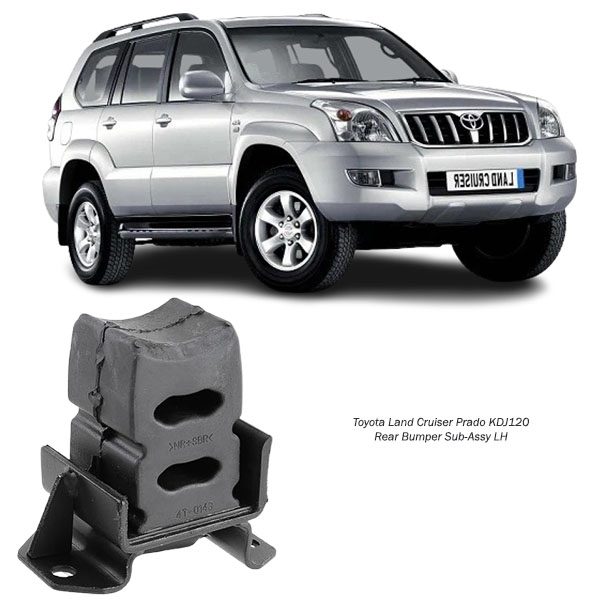-7%
Get Toyota Land Cruiser Prado KDJ120 Rear Bumper Sub-Assy LH 48036-60011 in Kenya
The Rear Bumper Sub-Assembly LH (Left-Hand Side) is a critical component in a vehicle’s bumper system. It plays an essential role in absorbing impact, maintaining structural integrity, and enhancing aerodynamics.
If your vehicle has sustained damage to the left-hand side of the rear bumper, replacing the Rear Bumper Sub-Assy LH is necessary to ensure safety and aesthetics.
In this guide, we will cover:
✔️ What is a Rear Bumper Sub-Assy LH?
✔️ Its Functions & Importance
✔️ Common Signs of Damage
✔️ Materials Used in Bumper Sub-Assemblies
✔️ Step-by-Step Installation Guide
✔️ Maintenance & Longevity Tips
✔️ Aftermarket vs. Genuine Parts
What is a Rear Bumper Sub-Assy LH? 🤔
The Rear Bumper Sub-Assembly LH refers to the left-hand side section of the rear bumper support structure. It connects to the vehicle’s frame and bumper cover, providing:
🔹 Impact absorption – Reduces damage in a collision.
🔹 Structural support – Helps keep the bumper cover securely attached.
🔹 Aesthetic integration – Ensures seamless alignment with the vehicle body.
Components of a Rear Bumper Sub-Assy LH:
-
Bumper Reinforcement Bar (LH Side) – The main support structure that absorbs impact.
-
Energy Absorber (Foam or Plastic) – Helps distribute impact energy.
-
Mounting Brackets & Clips – Secure the bumper assembly to the frame.
-
Bumper Cover (if included) – The outer plastic layer that gives the bumper its shape.
Functions & Importance of the Rear Bumper Sub-Assy LH ⚙️
The rear bumper sub-assembly LH plays multiple roles in ensuring vehicle safety and performance:
1️⃣ Impact Protection 🚗💥
-
Absorbs and distributes forces in a rear-end or side collision.
-
Reduces damage to essential components like the fuel tank and exhaust system.
2️⃣ Structural Support 🔩
-
Keeps the rear bumper cover securely attached to prevent sagging or misalignment.
3️⃣ Aerodynamics & Stability 🌬️
-
A properly installed bumper reduces wind resistance and drag.
-
Improves fuel efficiency and driving stability.
4️⃣ Aesthetic Integrity 🎨
-
A well-maintained bumper improves the vehicle’s appearance.
-
Ensures that the left-hand side aligns perfectly with the rest of the car.
5️⃣ Safety Features Integration 🏆
-
Some bumpers house rear parking sensors or reflectors.
-
A proper installation ensures these safety systems work correctly.
Common Signs of a Damaged Rear Bumper Sub-Assy LH 🚨
Over time, the left-hand side of the rear bumper can suffer damage due to accidents, curb impacts, or normal wear. Here are the key signs that it needs replacement:
🔴 Cracks or Dents – Visible cracks indicate the need for a replacement.
🔴 Loose or Misaligned Bumper Cover – If the bumper appears uneven or is pulling away, the mounting brackets or clips may be damaged.
🔴 Rattling or Vibrations – A loose bumper may cause annoying rattling noises while driving.
🔴 Broken or Missing Fasteners – The mounting clips may have snapped due to impact.
🔴 Faulty Parking Sensors – If your vehicle has rear sensors, a misaligned bumper may cause malfunctions.
🔴 Paint Damage or Rust – Exposed metal parts may begin to rust over time.
If you notice any of these symptoms, consider replacing your Rear Bumper Sub-Assy LH to maintain safety and aesthetics.
Materials Used in Rear Bumper Sub-Assy LH 🔬
Different materials offer various levels of durability, flexibility, and impact resistance.
🔹 Polypropylene (PP) – The most common material due to its lightweight and flexibility.
🔹 ABS Plastic – More rigid than PP, providing better scratch resistance.
🔹 Fiberglass – Offers higher stiffness but may crack on heavy impact.
🔹 Carbon Fiber – Ultra-light and strong, mainly used in performance vehicles.
🔹 Steel or Aluminum Reinforcement – Provides additional strength and impact resistance.
For most daily-use vehicles, polypropylene and ABS plastic are the best choices due to their durability and affordability.
Step-by-Step Installation Guide 🛠️
If you need to replace the Rear Bumper Sub-Assy LH, follow these steps:
🛠️ Tools Required:
✔️ Socket wrench set
✔️ Trim removal tool
✔️ Screwdrivers
✔️ Torque wrench
✔️ Jack & jack stands
🔧 Installation Steps:
1️⃣ Prepare the Vehicle
-
Park the car on a flat surface and engage the parking brake.
-
Use jack stands if necessary to access the bumper mounting points.
2️⃣ Remove the Damaged Bumper Sub-Assy LH
-
Locate and remove the screws and clips securing the bumper.
-
Carefully detach any parking sensor wires or reflectors.
-
Use a trim removal tool to unclip the left-hand side of the bumper assembly.
3️⃣ Inspect the Mounting Area
-
Check for bent brackets or broken fasteners.
-
Replace any damaged parts before installing the new assembly.
4️⃣ Install the New Rear Bumper Sub-Assy LH
-
Align the new assembly with the mounting points.
-
Secure it using screws, bolts, and clips.
-
If applicable, reconnect parking sensors and reflectors.
5️⃣ Adjust & Tighten
-
Use a torque wrench to tighten the bolts to manufacturer specifications.
-
Ensure proper alignment with the right-hand side bumper section.
6️⃣ Test & Verify
-
Check that the bumper is secure and flush with the vehicle body.
-
If equipped, test parking sensors and reflectors.
-
Take a test drive to ensure there are no rattling noises.
Aftermarket vs. Genuine Rear Bumper Sub-Assy LH – Which One to Choose? 🤷♂️
When replacing the Rear Bumper Sub-Assy LH, you have two options:
| Feature | Genuine OEM | Aftermarket |
|---|---|---|
| Fit & Compatibility | ✅ Perfect Fit | ⚠️ May require modifications |
| Durability | ✅ High-Quality Materials | ⚠️ Varies by brand |
| Warranty | ✅ Covered by Manufacturer | ❌ Usually No Warranty |
| Cost | ❌ More Expensive | ✅ More Affordable |
If you want reliability and a perfect fit, genuine OEM bumpers are the best choice. However, if you’re looking for a budget-friendly option, a high-quality aftermarket bumper may also work.
Final Thoughts 💡
The Rear Bumper Sub-Assy LH is a vital part of your vehicle’s rear-end protection and aesthetics. Whether you’re replacing a damaged bumper or upgrading for better durability, choosing the right materials, proper installation, and regular maintenance ensures long-lasting performance and safety.
Follow us on Facebook for more parts.





Reviews
Clear filtersThere are no reviews yet.